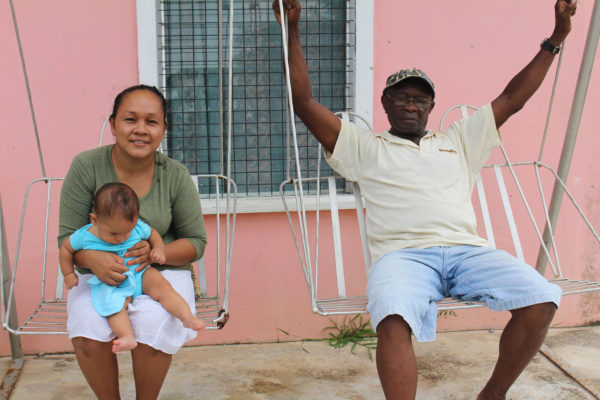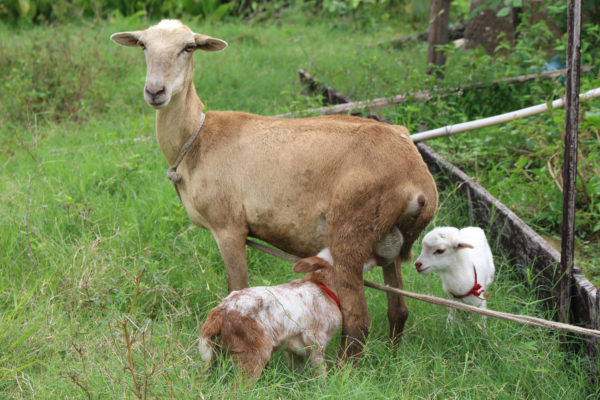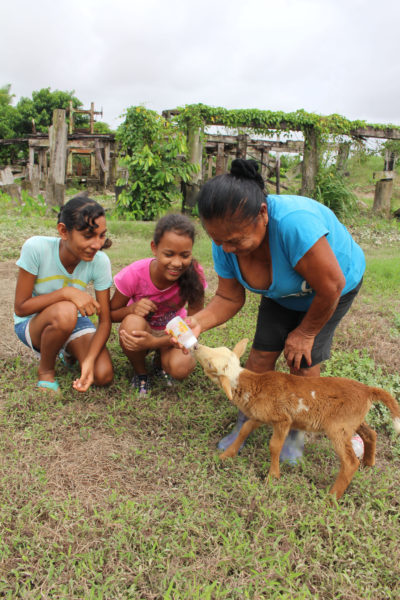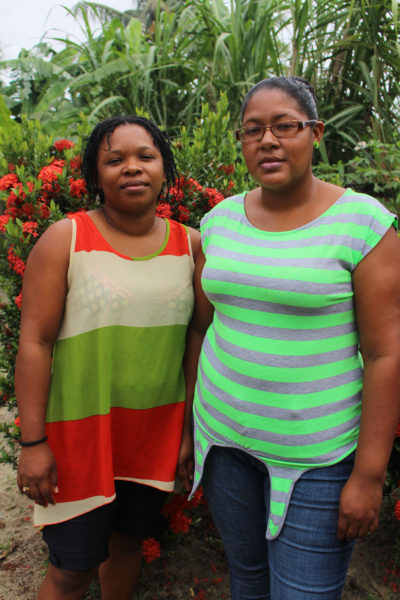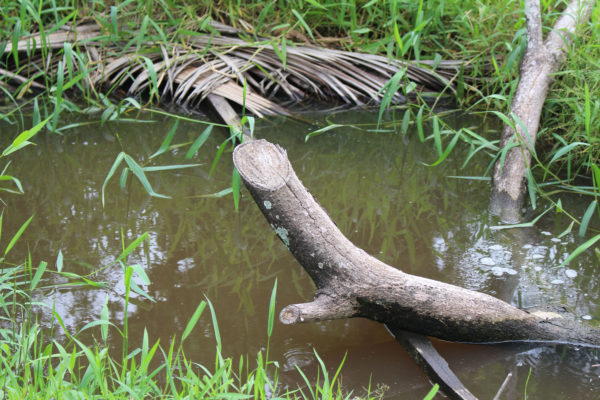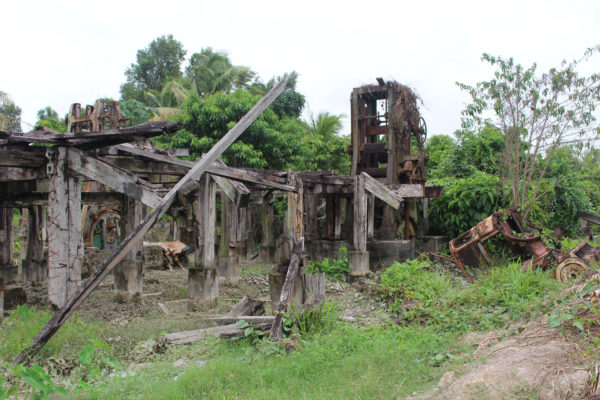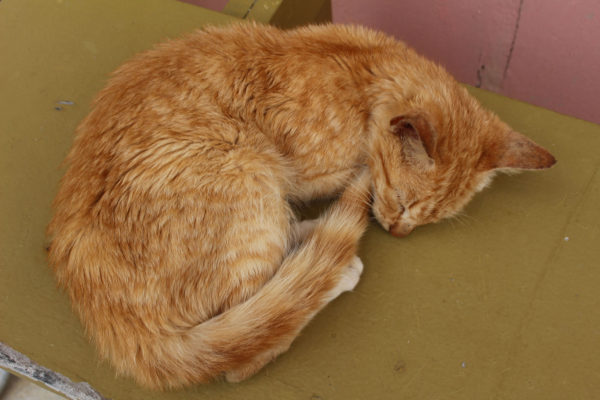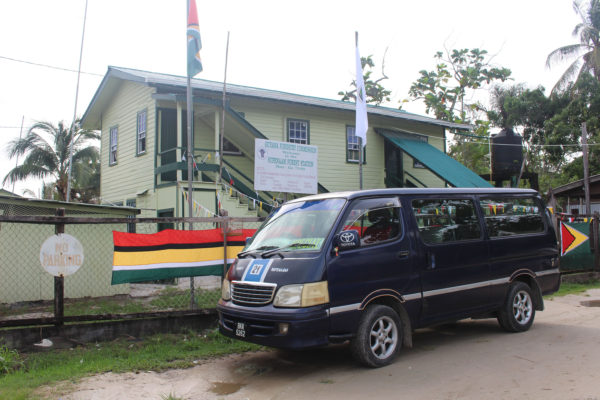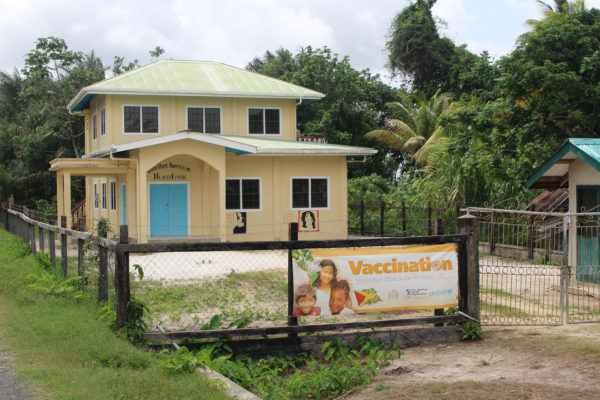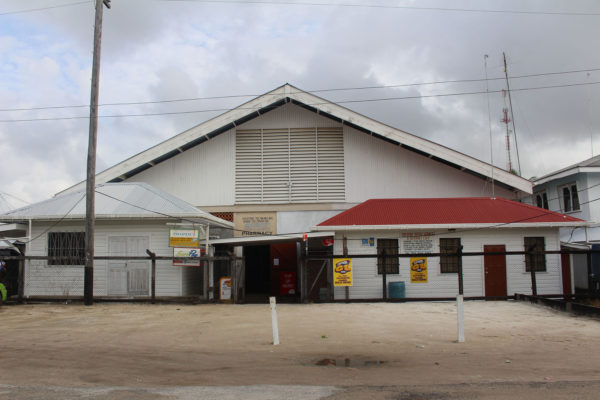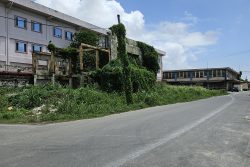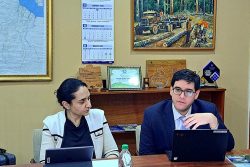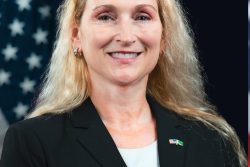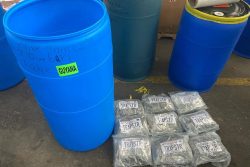Photos by Joanna Dhanraj
Abigail Brand was born and raised at Good Hope and is a former teacher at Good Hope Primary School. According to her, the village has been around since the 1800s and her life is steeped in its history. Her mother was born here also, she said, and her forebears were among the freed slaves who pooled their money and bought Good Hope.
“We’re like one family. Most persons are related,” Brand said. According to her, the village has somewhere between 1,500 and 2,000 residents.
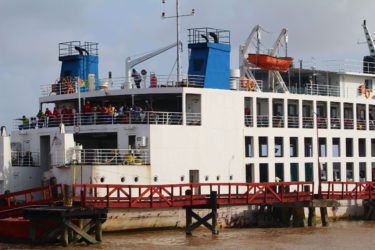
“Growing up here I can remember playing doll house with my school friends. We used to like play ketcha too. We used to go and play by the canal, which is far in the backdam. Who could have swim used to swim but I couldn’t,” she said.
The Suddie Hospital is the closest one to the village; her sister works as a nurse there.
She, too, noted the flooding during heavy rainfall and high tides. Brand said her father tries a bit with farming. Recently with the heavy rain he was forced to lift his pumpkins along with the vines to higher ground. That, she said, is a disadvantage.
“One good thing about living here though, is we have the stelling very close to us along with the speedboat service. We also have the school and the health centre… However, I think we need to see some more infrastructure as in roads. We need roads down at the back where persons are living. All they have are track ways.
“We also need a housing scheme where persons can buy their own house lots [and for] “our playgrounds to be fixed for our young people.”
She added, “We also need a recreational facility; a library would benefit us well.
“Some people are self-employed while we have persons working with the speedboat service. The school provides employment also yet unemployment is a major, major disadvantage in my community.
“The place is very quiet and peaceful and only when there’s a holiday then you’d find the place a little noisy; if there’s a party.”
In a yard with another loaded mango tree hanging all the way to the drain lives 26-year-old Jenela Phoenix.
“Before it didn’t had so much vehicles; it didn’t even had a road. The road was a loam road. The place didn’t clear. It had bush at the side,” Phoenix said. Once the road was pitched, vehicles increased.
“Every month end we buy groceries from the supermarket in Suddie. When we run out, we buy from the shops around. Greens are taken care of here. We get greens from the Supenaam Market or persons who come by selling in and out of the week,” she said.
Phoenix’s husband is one of the men who work at Barama in Buck Hall. He and most of the other men there only make it home on weekends because of the distance they have to travel by boat.
The seawall, she pointed out, wasn’t built all the way through. She claimed that its completion was hindered by the now defunct Mendes Sawmill. Now a part of the dam has broken away and the water overtops during the spring tide.
Although she is pleased that the school and health centre are situated nearby, she doesn’t like that the cemetery behind the school floods and the excess water drains into the school’s ball field. She wishes that something can be done to improve the situation, like raising the ball field’s land.
Phoenix said while she hasn’t known any other place, she believes the atmosphere in her community is one of the best. “People around here alright; you don’t get quarrels and trouble with them,” she said.
According to Phoenix and her sister-in-law, the head teacher of the Good Hope Primary had once mentioned that it is one of the primary schools with the most pupils in Region Two, though it is the smallest.
Close by, the ruins of the Mendes Sawmill are overrun by bush. Sheep graze here and two young girls watched in delight as a relative fed a lamb using a baby bottle.
Susan Lowe lives obliquely opposite. A former overseer who once worked at the Neighbourhood Democratic Council, Lowe said she left her job to enjoy motherhood and being a wife.
She has a kitchen garden and rears sheep. She used to rear lots of tilapias also but since giving birth to her baby, Isaiah, she’s down to a little pond with a few of them. She also teaches Sunday School downstairs at her residence.
For recreation she and her family would sometimes go fishing or visit Lake Mainstay. She plays games in the yard with her daughter and other children or sometimes they enjoy a game of Scrabble.
“I belong to Hibernia but I moved here in 2001 after getting married,” she said. “I started working when I was 16 years old, so I craved to be home.
“Working at the NDC I met all the reputable people. I find people to be very friendly. I’ve never had any problem with anybody. I really don’t find any disadvantages. I’m comfortable and happy here. It’s quiet basically.
“I would like to see job creation and recreational facilities for the young people. We’re starved for recreation here. We need training for vocational skills. We have too many people getting involved in drugs. I’d like to see the authorities deal with this issue,” said Lowe. “Otherwise, Good Hope is a nice community. People are very cooperative.”
Speaking of the land issue, Lowe said that what she knows is that, “The former president, Forbes Burnham declared Good Hope a land registration area. The village was bought by 21 former slaves so that means 21 shares of land. One share is only entitled to 28 house lots so if one family has fifty relatives; how can they claim for each of them?”
She added, “The government needs to settle the issue based on the previous transport.”
She is hoping that the court deals with the ongoing situation, not on occupational survey but based on the shares; allowing “rightful persons” titles to their land.
When the World Beyond Georgetown left Good Hope, the roll-on-roll-off ferry was docked at the stelling preparing to leave at 4 pm. This time, the journey took approximately 90 minutes, but there was no climbing and slapping of waves. Instead, the ferry rolled calmly and uneventfully back to Parika.
